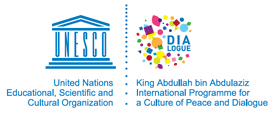If it were possible to define generally the mission of education, it could be said that its fundamental purpose is to ensure that students benefit from learning in ways that allow them to participate fully in public, community and economic life.”
— New London Group
Background and Rationale
The rapid growth of media and information and communication technologies (ICTs) and the attendant convergence of communication and information make it imperative that media and information literacy (MIL) be seen as vital to the empowerment of people. MIL has become an important prerequisite for harnessing ICTs for education and fostering equitable access to information and knowledge. The societies in which we live today are driven by information and knowledge. We cannot escape the ubiquity of media and all forms of information and communication technologies and the role that they play in our personal, economic, political and social lives. Clearly, then, new forms of competencies (knowledge, skills and attitudes) are required for people to effectively participate and succeed throughout all stages of life in the information and knowledge societies. This has led to media and information literacy becoming increasingly important to teaching and learning.
According to the most recent statistics of the ITU World Telecommunication/ICT Indicators Database, 2009, 1.3 billion (3/4) of the world’s 1.7 billion households, representing 4.9 billion people, have a television; 0.6 billion (1/3) of all households, representing 1.9 billion people, have access to a computer, and 4.6 billion mobile phone subscriptions were projected by the end of 2009. Added to this there are over 2.5 billion radio receivers. The World Association of Newspapers reports paid-newspaper readership worldwide to be in excess of 1.4 billion in 2007. The UNESCO Institute of Statistics estimates that close to 1 million new books are published annually in the world.
When taken together, the number of television and radio stations, newspapers, cell phones, access to and use of the Internet, books, libraries, billboards, and video games determine much of what we learn about ourselves, our country, our cultures and the world around us.
Media and other information providers are central to democracy and good governance, both as a platform for democratic discourse and as providers of information and knowledge. If the media are to support democracy, citizens need to understand how to use them critically, knowing how to interpret the information that they receive, including the use of metaphors, irony, and the way that stories and events are framed to suggest certain meanings. As citizens, people need specific competencies (knowledge, skills and attitudes) to engage with the media, and ultimately with their political processes and governance, and to effectively use resources provided by media, libraries, archives and other information providers. Media and information literacy offers a necessary set of competencies for the 21st century.
In many aspects, traditional literacy has been redefined. It is no longer sufficient for people to only learn reading, writing and arithmetic. While the importance of these fundamental numeracy and literacy skills cannot be underestimated, the inclusion of media and information literacy in the curriculum means that young people must also understand the functions of media and other information providers and seek, evaluate, use and create information to achieve their personal, social, occupational and educational goals. They must also possess basic skills for critical thinking, to analyze and use them for self-expression, for becoming independent learners, producers, informed citizens, professionals, and for participating in the governance and democratic processes of their societies (cf. Report of National Forum on Information Literacy, 2005).
This module is built on three pillars: critical thinking, self-expression and participation. It will consider MIL as relevant to and overlapping with a variety of disciplines/fields, and will explore such questions as:
- What is information? What are media? Why teach about them? Why are they important?
- What is media literacy?
- What is information literacy?
- Why media and information literacy?
The module will present MIL as a teaching and learning process rather than solely as a discipline. Therefore, it will broadly introduce teachers to key issues and concepts of the field which will be dealt with in more detail in other modules, offering them the opportunity to develop an understanding of the difference between ‘teaching about’ and ‘teaching through’ the media and information literacy. The aim is for teachers themselves to become media and information literate, and to develop the competencies and skill necessary for integrating MIL into the primary and secondary school curricula.

